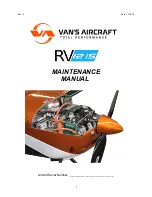
Boomerang 12 user manual
_____________________________________________________________________________________________________________________________________
Other tips for dangerous situations
Many reserve deployments are a result of a cascade of over-corrections by the pilot. Please note that
over-corrections are often worse than no input at all.
If for some reason the brake lines are not working, e.g. if the knot on the brake handle has come
undone or a brake line is defective, the Boomerang 12 can also be steered and landed using the rear
risers.
In this case, stall happens more quickly and the pilot must compensate for the changed
fl
ight
behaviour by pulling carefully on the risers.
We strongly advise you not to
fl
y in the rain on any paraglider including the Boomerang 12. If you do
fl
y in the rain, be aware that you will have a greater risk of entering a deep stall. It is wise to apply
speedbar after passing through rain until you are con
fi
dent that the glider is
fl
ying normally, and has
preferably dried out so that there is no longer any risk of deep stall.
Flying in extremely humid weather or in rain is outside of the operating limits of the glider. If you are
unable to avoid
fl
ying in rain, please observe the following:
●
it is advisable to
fl
y with slight acceleration during and after the rain (min. 30% or more)
●
use no brake input or as little as possible
●
control travel reduces
●
avoid tight turns, especially in the
fi
nal approach. If conditions allow, you should also
fl
y
slightly accelerated in this phase
●
avoid large angles of attack and the possible early stall near the ground (release the speed
bar only slowly
Always make sure before attaching advertising to the glider that the adhesive planned will not alter
the glider’s
fl
ight behaviour. If you are in doubt, we recommend that you do not attach the adhesive.
Attaching adhesives to the glider which are large, heavy, or made of unsuitable material may result in
revocation of the certi
fi
cation.
The glider structure is put under high levels of strain in particular on extreme
fl
ight manoeuvres, rapid
descent methods (spiral dives) or prohibited aerobatic manoeuvres. They considerably accelerate the
aging process of the structure and should therefore be avoided.
The glider must be inspected earlier than is usually the case if it has been put under more than the
usual degree of strain.
In many cases, sand and salt air cause the lines and fabric to age much more rapidly. If you often
fl
y
near the sea, the glider should be inspected more frequently than normally required.
Page 26
Summary of Contents for Boomerang12
Page 1: ...v1 0 March 2022...
Page 46: ...www gingliders com...
















































